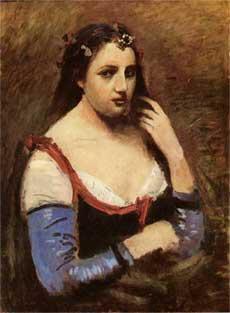Hungary
The Hungarian Experience And A 1944 Law Persecuting Its Jews
When Hitler came to power, the community of collectors in Hungary included families that had prospered under the Austro-Hungarian Empire. Several had assimilated, converted from Judaism, received noble titles, and considered themselves both loyal subjects of the emperor and cultural cosmopolitans. Their extensive collections of old master paintings and works by the late nineteenth- and twentieth-century artists who were their contemporaries were targets of looting in the last year of the war.
During Hitler’s first year as chancellor, Hungary formed a close alliance with his government. Anti-Jewish policies were followed in Hungary, by Hungarians. In 1938, a new law restricted the role played by Jews in the Hungarian economy to 20 percent. The following year, that number was reduced to 6 percent, and Hungarian Jewish men from age 20 to 48 were placed into forced labor. In the summer of 1941, Hungarian officials deported 17,000 Jews who were living in Hungary, and the following winter the Hungarian military and national police murdered 1,000 Hungarian Jews.
Hungary was an Axis power, but as they realized that their side could well lose the war, Hungary began to make approaches to the Allies. Germany retaliated by invading its less-than-stalwart ally. Jews, and those of Jewish ancestry, had already been persecuted in Hungary, but now a huge effort by the Hungarian government to exterminate Hungarian Jewry through mass deportations began with the assistance of Adolf Eichmann. All Jewish-owned shops were ordered closed, Jewish apartments were turned over to the authorities, Jewish property was appropriated, mass round-ups and deportations to death camps were carried out.
Looting of Jewish property in Hungary near the end of the war was carried out not by any single record-keeping Nazi agency, but mostly by officials for personal gain. And when Soviet troops occupied Hungary after the armistice, the looting continued. After the war, Hungary remained under strong Soviet influence, and it was virtually impossible for a claimant who had survived the war and lived abroad to succeed either with the government museums or through the courts. Decades of hopelessness passed.
After the dissolution of the Soviet Union and the Warsaw Pact, some families attempted to negotiate returns. Isolated small successes were dwarfed by the number of frustrated claims caused by the intransigence of Hungarian authorities. Taking a distinctly different position on its own account, the government of Hungary has vigorously tried to negotiate the return of art now in Russia and has successfully pursued the recovery of a painting by Giorgio Vasari from the Museum of Fine Arts in Montreal.

Jean-Baptiste-Camille Corot, Female portrait (Lady with Marguerite)
ca. 1868-70
Legal Papers
Court Rulings & Decisions
Press & Scholarly
Press & Scholarly
- Hungary is Powerless to Keep Stolen Art from Nazi Restitution, February 4, 2013
- The Perception of 1944 in the Fidesz-constitution, by Kriszti�n Ungv�ry (art historian), April 15, 2011
- Claims for Art Collection Pose a Challenge to Hungary, Judith H. Dobrzynski, The New York Times, July 7, 1998
- On the Reporting and Attachment of Jewish Assets, Regulation M.E. 1600, the Hungarian Royal Ministry, 1944
Affiliated with the World Jewish Congress
Commission for Art Recovery, Inc. | © 2016 All Rights Reserved | Site Index
